
Posts Tagged: Anderson
UC Davis Butterfly Guru and 'Weeping Rocks'
In case you missed editor Jocelyn Anderson's piece in the UC Davis Magazine, don't miss this...
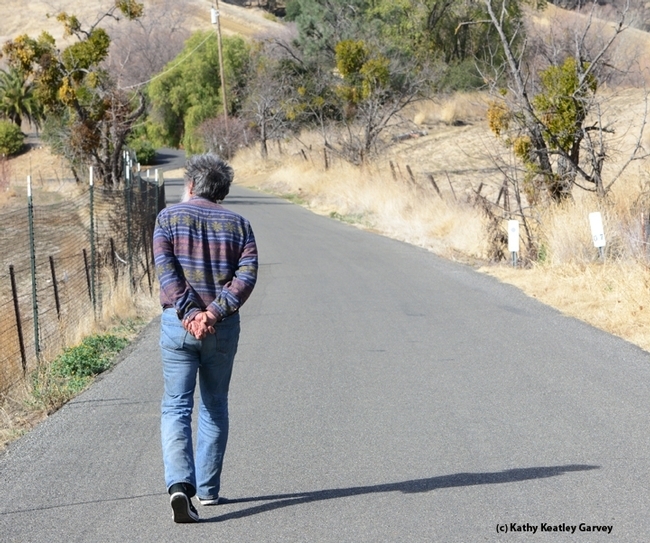
UC Davis distinguished professsor Art Shapiro monitoring his Gates Canyon, Vacaville site. He's been monitoring the butterfly populations of Central California for 50 years. (Photo by Kathy Keatley Garvey)
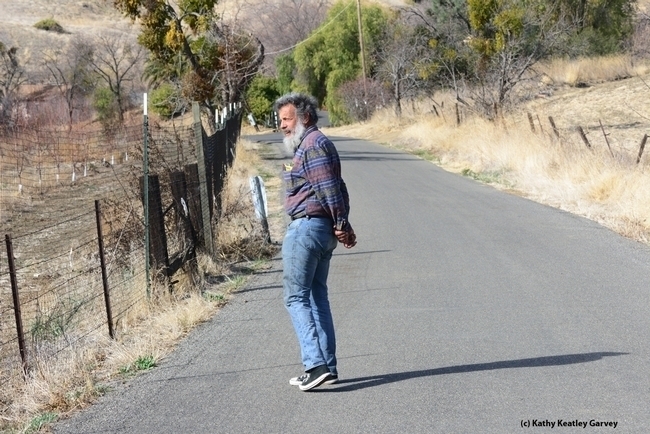
Butterfly guru Art Shapiro spots a butterfly off Gates Canyon Road, Vacaville, on Jan. 25, 2014. (Photo by Kathy Keatley Garvey)
UC Davis Scientists Weigh in on 'The Plight of the Pollinators'
UC Davis scientists weighed in on "The Plight of the Pollinators," in an informative article by...
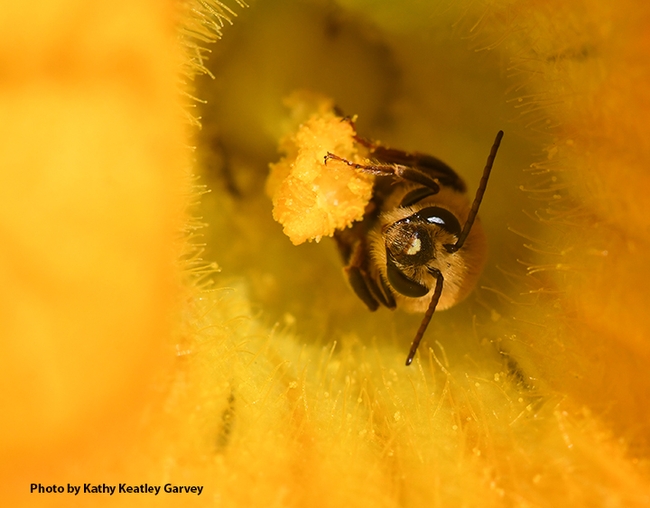
A squash bee, Peponapis pruinosa, pollinating a squash. (Photo by Kathy Keatley Garvey)
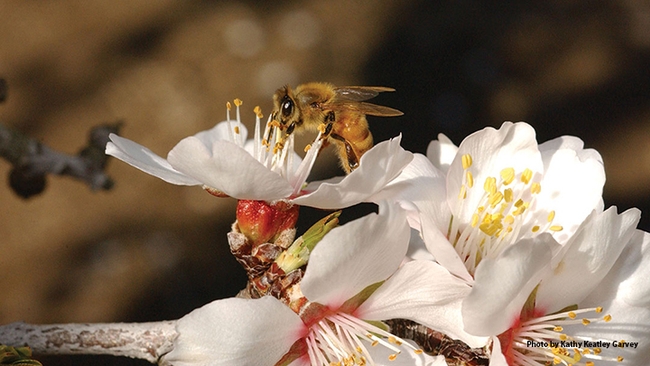
A honey bee, Apis mellifera, foraging on an almond blossom. (Photo by Kathy Keatley Garvey)
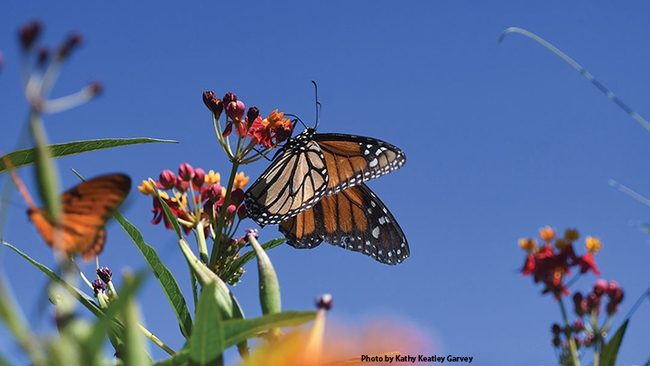
A monarch butterfly, Danaus plexippus, nectaring on milkweed, its host plant. (Photo by Kathy Keatley Garvey)
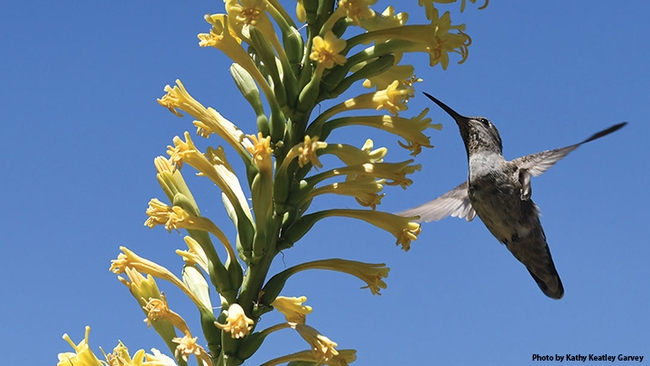
A hummingbird seeking nectar. (Photo by Kathy Keatley Garvey)
Life after Weed Science
I was inspired by Sarah Morran's blog post "Introducing new researchers in the UC Davis Weed...
For the Love of Bees
Sarah the Bee Girl stands in front of a cluster of first graders sitting by a six-foot worker bee...
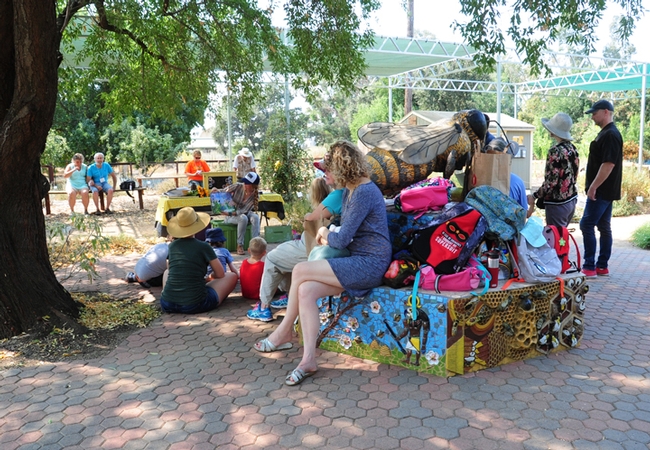
First graders, school officials and parents from Peregrine School cluster around a bee sculpture at UC Davis Häagen-Dazs Honey Bee for a "Kids and Bees" program. (Photo by Kathy Keatley Garvey)
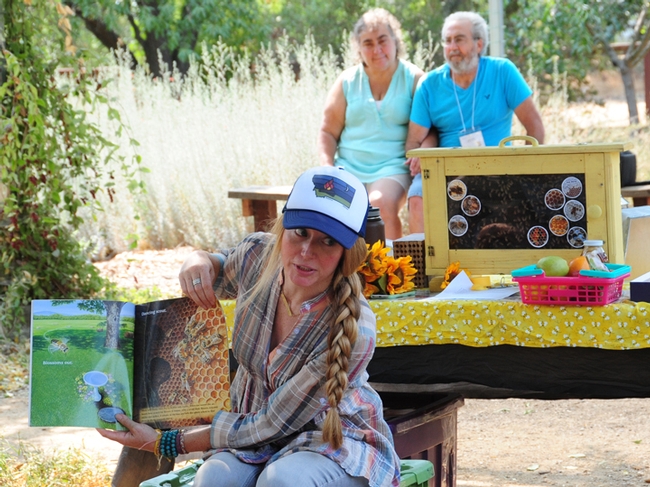
Sarah the Bee Girl reads a book about bees. In back are WAS members Cyndi and Jim Smith of Donney Lake, Wash. Cyndi serves as the secretary. (Photo by Kathy Keatley Garvey)
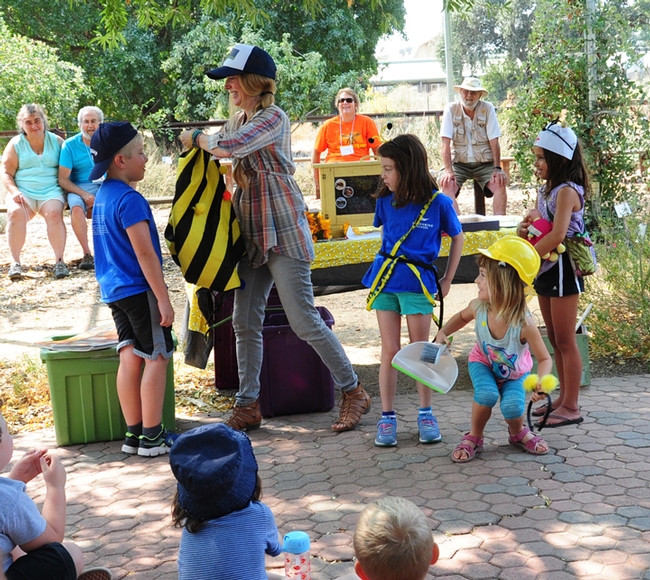
Sarah the Bee Girl outfits a first grader with a forager costume for correctly answering a question about foragers. (Photo by Kathy Keatley Garvey)
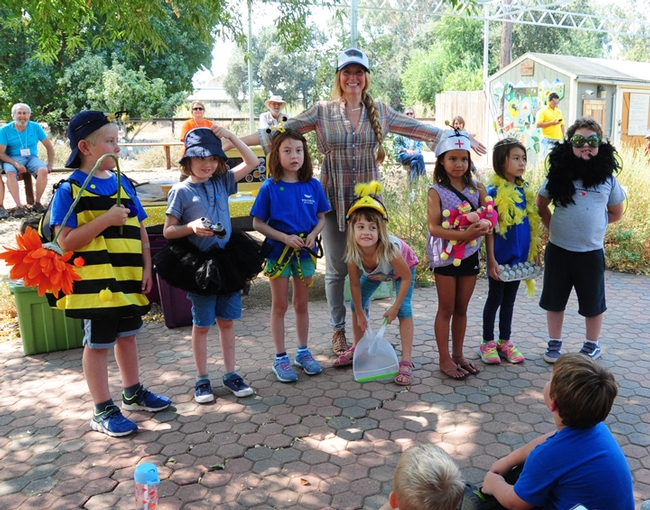
After Sarah the Bee Girl (back) read a book about bees, she quizzed them, and those with the correct answers were given props depicting those bees. These youngsters represent (from left) a forager, a scout bee, a house bee, a nurse bee, the queen bee and a drone. (Photo by Kathy Keatley Garvey)
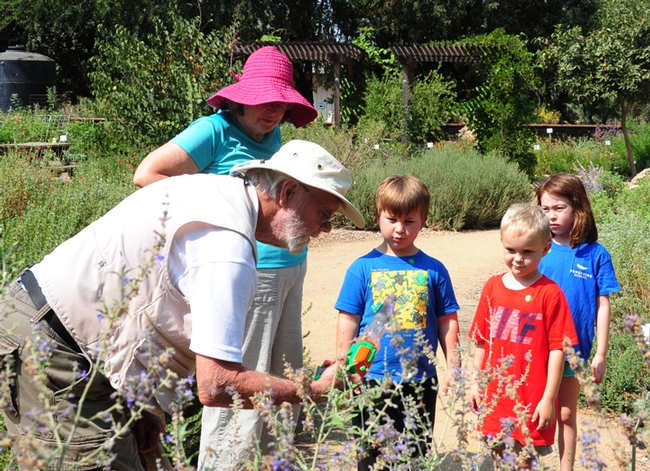
Robbin Thorp (left), distinguished professor of entomology at UC Davis, catches a bee with his device. A magnifying class enables the youngsters to see the bee up close. (Photo by Kathy Keatley Garvey)
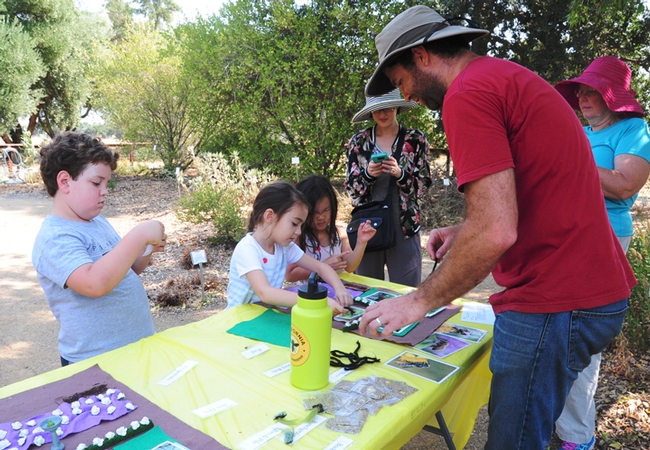
Staff research associate Charley Nye, manager of the Harry H. Laidlaw Jr. Honey Bee Research Facility, staffed the bee habitat table. (Photo by Kathy Keatley Garvey)
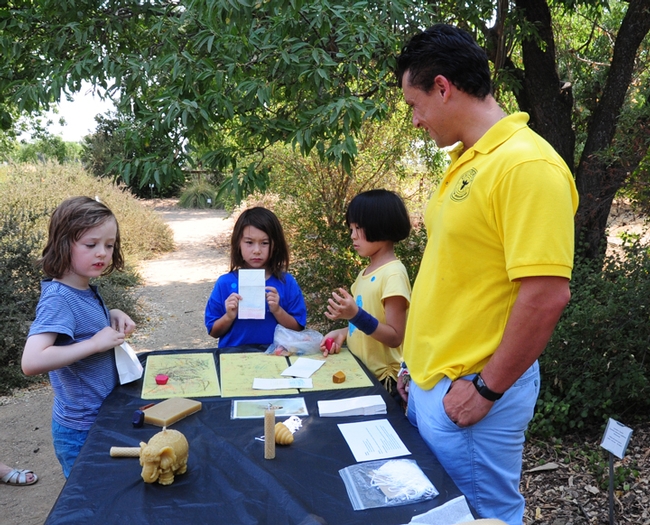
Staff research associate Bernardo Niño of the Harry H. Laidlaw Jr., Honey Bee Research Facility/UC Davis Department of Entomology and Nematology, staffed the beewax table. (Photo by Kathy Keatley Garvey)
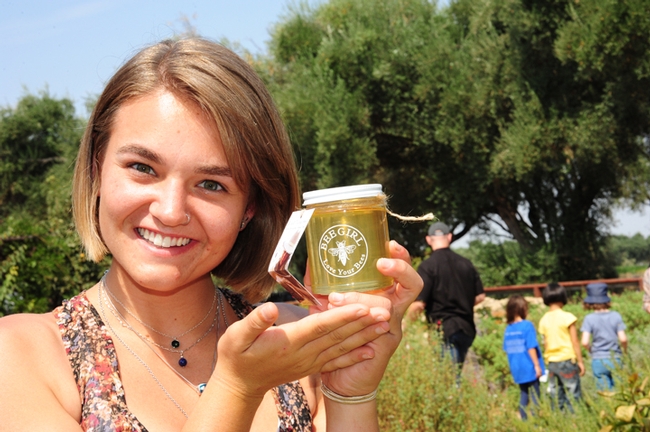
Zoe Anderson, a UC Davis undergraduate student majoring in animal biology, holds up a jar of honey bottled by Sarah the Bee Girl. Her bees foraged on vetch to produce this honey, which was the favorite of all the honeys tasted. Anderson staffed the honey-tasting table with WAS member Kari Hallopeter of Spokane, Wash. (Photo by Kathy Keatley Garvey)
Yelp ratings give restaurants a boost
Every wonder whether those crowd-sourced reviews online actually make a difference in a business’s bottom line? For restaurants, the answer is an unequivocal yes, according to a new study by UC Berkeley economists. Researchers analyzed restaurant ratings on Yelp.com and found that, on a scale of 1 to 5 stars, a half-star rating increase translates into a 19 percent greater likelihood that an eatery’s seats will be full during peak dining times.
“This is the first study to link online consumer reviews with the popularity of restaurants,” said study lead author Michael Anderson, assistant professor in the Department of Agricultural and Resource Economics at UC Berkeley. “We show that social media sites and forums play an increasingly important role in how consumers judge the quality of goods and services.”

The study found that moving from 3 stars to 3.5 stars increases a restaurant’s chance of selling out during prime dining times from 13 percent to 34 percent, and that moving from 3.5 stars to 4 stars increases the chance of selling out during prime dining times by another 19 percentage points. These changes occur even though restaurant quality remains constant.
Not surprisingly, the economists found that crowd-sourced reviews have a bigger impact when there is a lack of alternative information available by which to judge a restaurant’s quality. They also found that restaurants rated in popular guidebooks or newspaper rankings did not see a statistically significant effect from the Yelp rankings.
“If a restaurant has a Michelin star or it appears in the San Francisco Chronicle’s list of Top 100 Restaurants in the Bay Area, the Yelp star becomes irrelevant,” said Magruder. “Those restaurants are relatively famous, and consumers already know them. For restaurants that were not on those established reviews, we actually saw a 27 percent greater likelihood in filled seats during peak dining times with a half-star rating increase on Yelp.”
Could these findings lead to potential manipulation of the ranking system for profit?
“We considered that possibility, and our study indicates that so far, such manipulation is under control,” said Anderson. “There are enough reviews available that it would be difficult to generate enough fake positive reviews to drown out the bad ones. There is also an element of self-policing since customers going to a restaurant on the basis of a good fake review only to be disappointed could submit a bad review. It could be hard for the business owner to sustain the false positives over time.”
The researchers are now looking to expand their analysis beyond eateries to sites such as Amazon.com, Tripadvisor.com and Netflix.com.
